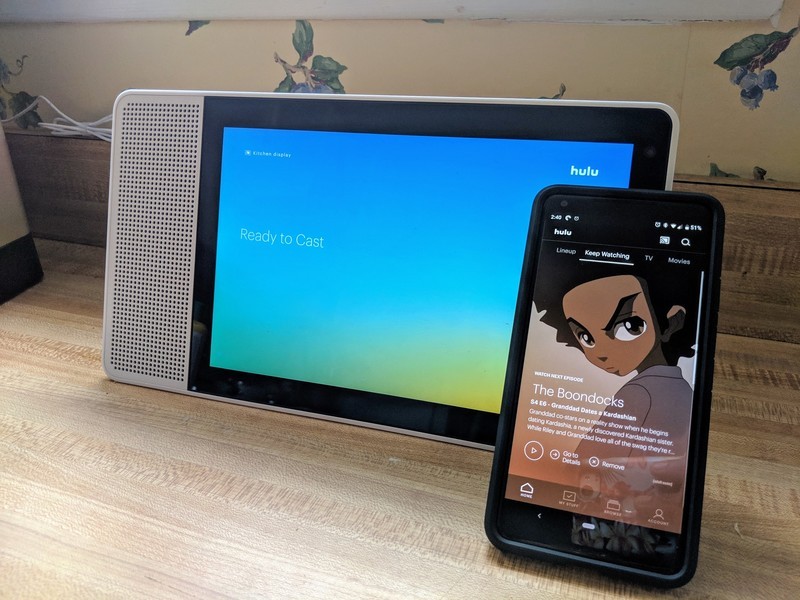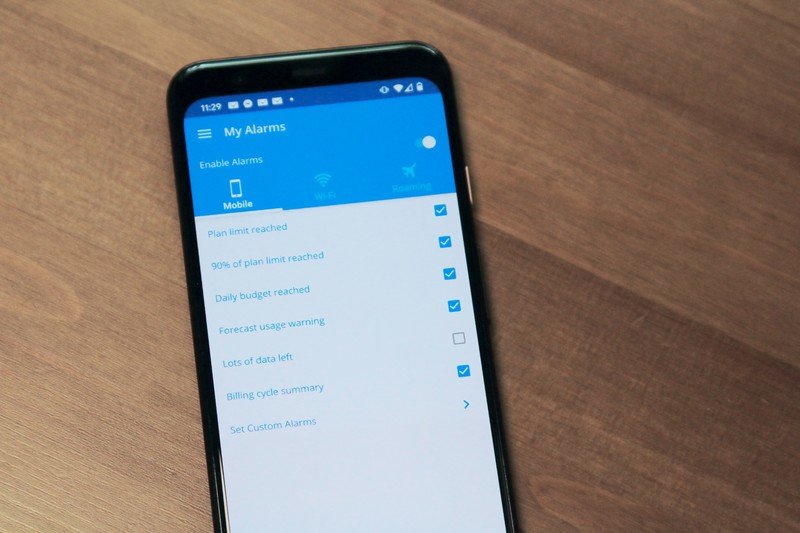Does Xfinity Stream Use Data

The things most of us love to do with our phones is also the matter that eats the near information: stream music and video.
Your phone is your amusement eye, only with a information cap.
Modern phones and streaming services were fabricated for each other. Your phone is capable of delivering high-quality content through the screen or its audio components and streaming services like Disney+, Netflix and Spotify were made to evangelize them. The first popular media-centric telephone was the iPhone and both Apple tree and Google owe a lot of their success to this because information technology was as well the best way to watch YouTube in the palm of your hands.
Things have come up a long way since then, only one affair hasn't changed. Nosotros love to watch and heed with our phones. But the advent of HD video streaming and high-bitrate audio streaming means that it also gobbles up the data like never before. Let's break it down to run into just how much information yous use when you fire up your favorite streaming app.
Streaming audio

While some services offer super-HQ streaming music, most services use the aforementioned scale: Depression, Normal, and Loftier. Nearly besides employ the same bitrate (the number of $.25 per second that are transmitted digitally) to define each category. Here's how they look and how much information each will consume.
- Low quality is typically 96kbps. On average, Low-quality sound streaming uses 0.72MB per minute or 43.2MB per hour.
- Normal quality is typically 160kbps. Normal-quality music streaming uses i.20MB per infinitesimal or 72MB per hour on boilerplate.
- High quality music is typically 320kbps. High-quality streaming music uses 2.40MB per minute or 115.2MB per hour on boilerplate.
"Average" is the keyword here. Most services offering streaming that auto-adjusts based on your network weather condition, and some utilise lower quality bitrates for all categories. But most any other service, including YouTube Music and Spotify, follow these guidelines when y'all don't have things set up to car-adjust.
Streaming video

Every bit you can imagine, streaming video uses a lot more data than sound does. There's just more information being transmitted. And your network weather condition play a big office in how the media is streamed because nobody likes buffering. Thankfully, apps are smart enough to inquire for a video stream that will work with the available network speeds and buffering is mostly a matter of the past. Mostly. Notation that this hidden feature volition usually override your settings when it has to, but if you lot ask for an Hard disk or 4K video, y'all'll go information technology if information technology can be delivered.
Here'southward how the streams intermission down on average.
- Depression quality video is very low-quality. remember 240p or 320p. Low-quality settings volition use about 0.3GB (300MB) per hour.
- SD quality video is standard 480p video. SD-quality video uses about 0.7GB (700MB) per hour.
- Hard disk drive quality video is betwixt 720p and 2K (remember, the app adjusts the stream). HD-quality video uses nearly 0.9GB (720p), 1.5GB (1080p) and 3GB (2K) per hour.
- UHD quality video uses a lot of data. A 4K stream uses about 7.2GB per hour.
Once again, these are averages and Netflix has helped by telling united states of america how much information their service uses. Compression, variable quality based on network weather condition and your telephone's cache volition all cistron in hither, merely these numbers are a pretty safe bet.
How much tin I stream on my data plan?

A typical data programme that's not unlimited — and not from companies who practice zero-rating — comes in 2GB, 5GB, and 10GB flavors. If you wanted to stream media while using your data connection, here'due south what each tier will allow:
- 47 hours of low-quality music
- 28 hours of normal-quality music
- 17 hours of high-quality music
- 6.5 hours of low-quality video
- 2.8 hours of standard definition video
- 2.2 hours of 720p video
- 1.3 hours of 1080p video
- 0.6 hours of 2K video
- 0.25 hours of 4K video
- 117 hours of low-quality music
- 70 hours of normal-quality music
- 42.five hours of high-quality music
- 16.25 hours of low-quality video
- seven hours of standard definition video
- 5.5 hours of 720p video
- 3.25 hours of 1080p video
- 1.5 hours of 2K video
- 0.6 hours of 4K video
- 234 hours of low-quality music
- 140 hours of normal-quality music
- 85 hours of high-quality music
- 32.five hours of low-quality video
- fourteen hours of standard definition video
- 11 hours of 720p video
- six.5 hours of 1080p video
- three hours of 2K video
- 1.2 hours of 4K video
We followed the manufacture standard 1,000MB = 1GB formula hither and non the "real" adding of 1,024MB in one GB. That'southward considering your carrier might practise the same. And remember — these are close estimations. Because of how information is compressed and bitrates change based on every situation, my measurements may exist a petty different than yours. And none of this takes any rounding your carrier might do into business relationship. To united states, one.7MB is 1.7MB, not 2MB.
Streaming Hard disk media uses a lot of data. Know this before y'all decide how much y'all demand.
One thing these figures show is that y'all're e'er better off using Wi-Fi to stream high-quality media. Besides the data savings, Wi-Fi also has a more than robust signal that will mean less degradation or compression. Your internet visitor probably optimizes media traffic, but not nearly as much equally your wireless carrier does. You tin also employ services that let you lot download or pin your media while y'all're on Wi-Fi and play it back after.
Merely be enlightened that if yous lookout man eight hours of Hard disk drive video every day, you're going to need upwards of 300GB of data. That ways you lot'll need an unlimited plan that doesn't have the fine-print telling you "unlimited" stops at 22 or 24GB and then gets as well slow to stream. Such an animal doesn't exist, and carriers that zero-rate aren't going to serve yous 2K video (or even 1080p) without paying extra for it.
Uses these numbers to plan out how much data you need for streaming if you're shopping for service.

Disney+
Go beyond Disney to a new galaxy of content.
Catch your favorite Disney classics along with cracking shows from Curiosity, Star Wars, National Geographic, and Fox, in addition to stellar new shows like The Mandalorian.

Jerry is an apprentice woodworker and struggling shade tree mechanic. In that location's cipher he can't take apart, but many things he can't reassemble. You'll find him writing and speaking his loud stance on Android Key and occasionally on Twitter.
Does Xfinity Stream Use Data,
Source: https://www.androidcentral.com/how-much-data-does-streaming-media-use
Posted by: boardmorive.blogspot.com


0 Response to "Does Xfinity Stream Use Data"
Post a Comment